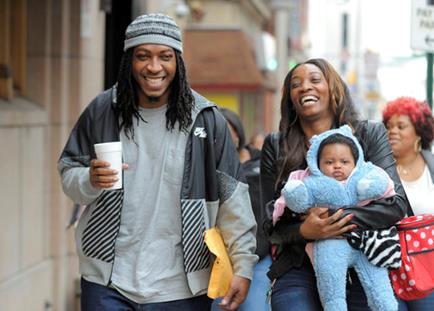Sabein Burgess
“I am being counted as a person again.” – Sabein Burgess, on what it’s like to have his freedom restored

Sabein Burgess was convicted of murdering his girlfriend in 1995 based solely on gunshot residue testimony. Almost 20 years later, MAIP and co-counsel Steptoe & Johnson determined that based on new research, the gunshot residue testimony was not scientifically sound. On February 21, 2014, after 19 years in prison, Mr. Burgess was finally released.
Burgess repeatedly professed his innocence. At the initial trial, there was no evidence linking Burgess to the crime aside from the faulty gunshot residue testimony. While Burgess was imprisoned, the real perpetrator independently confessed to the crime. The victim’s then six-year-old son also said he had seen two killers enter his mother’s home, and Burgess was not one of them.
Flawed forensic science testimony has been a factor in more than half of the DNA exonerations nationwide and more than 20 percent of all exonerations nationwide. This case proves once again the need for rigorous standards for the admission of scientific testimony.
More about this case:
National Registry of Exonerations